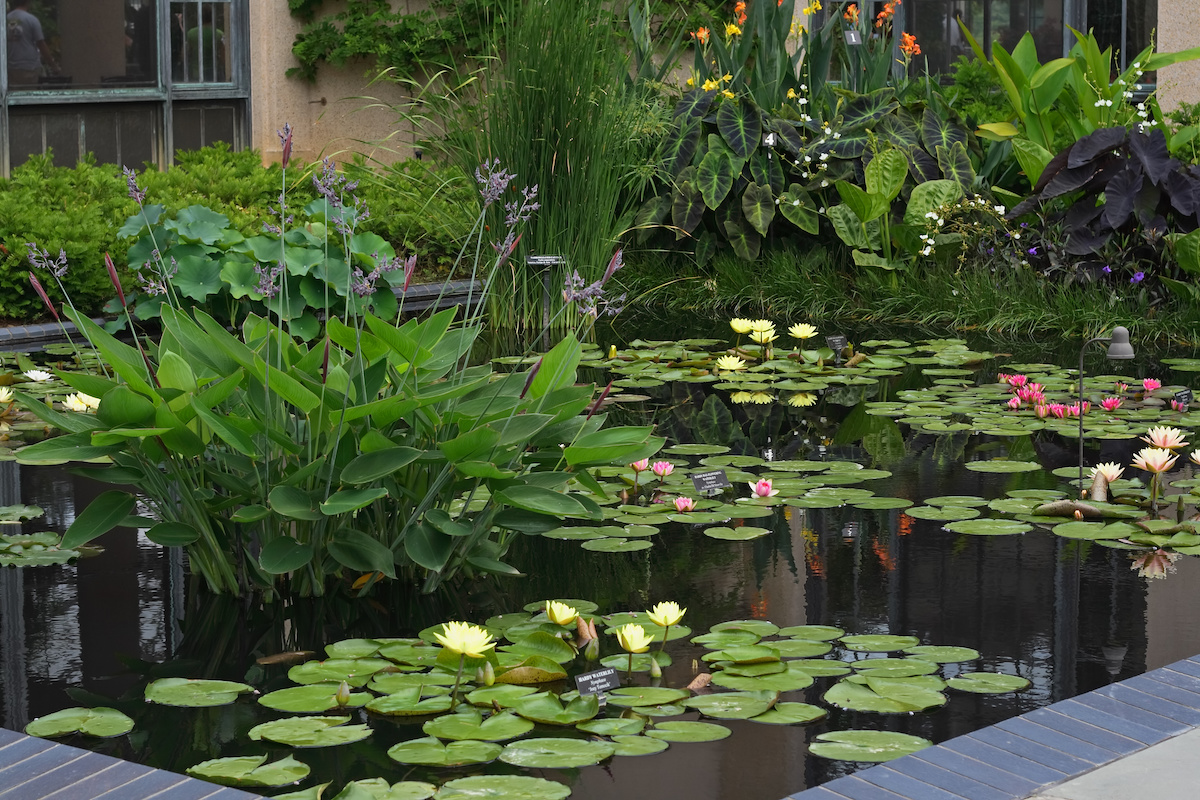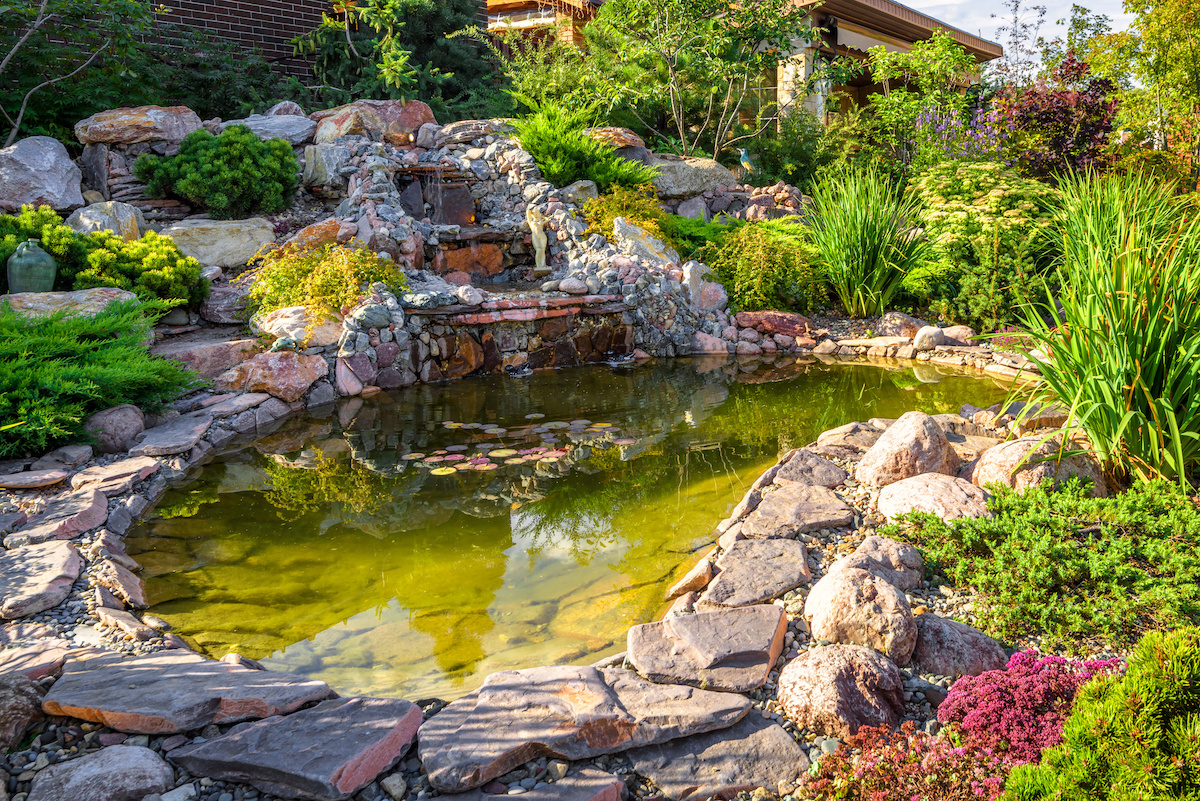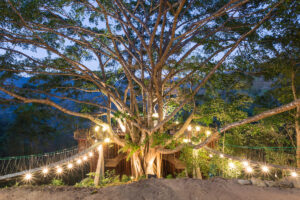If you love the outdoors, you probably already have a pond in your yard. Ponds are a fantastic addition to any backyard — not only are they beautiful but they also provide a habitat for aquatic plants and animals like frogs or turtles! They add a peaceful ambiance to your backyard and can be designed in endless ways, making it the perfect personal touch for your property.
In this blog, we’ll give you an overview of how you can use pond rocks and aquatic plants to attract more wildlife along with some other helpful tips.
What Are Pond Rocks?
Pond rocks are large, rock-like boulders used in ponds to provide a decorative element as well as a habitat for aquatic life. While any rocks can be used, specialized pond rocks will provide the best results.
Pond rocks can also be used to help build up waterfalls and spillways allowing you to shape your pond into unique formations that complement your space perfectly. They’re completely natural and sometimes can even come from your own property.
Are Pond Rocks Necessary?
Yes! Pond rocks help break down organic debris to keep a delicate nutrient balance in your pond’s ecosystem. This keeps your pond water clear, healthy, and hospitable for vegetation and wildlife.
Lining the bottom of your pond with rocks is also a great way to hide the unsightly plastic pond liner that is necessary for backyard ponds. A stone bottom gives a more natural look while providing a healthy habitat for your wildlife.
Pond Rocks Help Your Fish
Adding fish to your pond is a great way to add style and entertainment to your backyard oasis, but rocks are vital for them to thrive. In addition to keeping the nutrients balanced, rocks can provide shelter to keep fish safe from predators especially when they are too young to be up in the water column. Rocks also provide safe crevices for them to spawn once they are grown.
Are you wondering what kind of pond rocks to use? Pond rocks, when placed in groups, can help add variety to your pond. Some popular options include stones, pebbles, glass rock, and gravel. The type of pond rocks you use depends on the fish you have in your pond as well as the wildlife you want to attract. Unsure what type will work best in your habitat? The experts at Tampa Bay Ponds & Rocks can help you select stones that will best suit your pond goals.
Create Sloping Edges with Pond Rocks
Another way to attract wildlife to your pond is with pond rocks designed with sloping edges. The angled edges of the pond rocks resemble the banks of ponds and streams in nature. These rocks have been specifically designed to be placed underneath waterfalls, and around the perimeter of your pond to provide easy access for animals to climb up and drink from the water or even take shelter under the rocks.
Angled pond rocks with moss-filled crevices will attract frogs, salamanders, insects, and all kinds of wildlife to your pond. You can also place sloping edge pond rocks in the stream bed to create a “natural” looking stream in your pond.
Offer a Shady Area
It’s no secret that Florida gets very hot, especially in the summer. This is a time when animals are seeking shelter from the scorching sun, and your pond can provide just the relief they need. In addition to providing a variety of rocks, planting trees around the area can also attract more wildlife to your pond. For example, toads are more likely to be present in ponds that have plenty of plants and shady areas to hide.
Trees aren’t the only vegetation that can upgrade your backyard pond, there are many options, ranging from decorative tropical plants to functional moss and shade plants.

Incorporating Aquatic Plants
You already know that pond rocks are important for attracting wildlife. They give wildlife a place to hide, reproduce and even bask in the sun, but another way that you can attract more wildlife to your pond is by incorporating aquatic plants for ponds.
Aquatic plants help deter algae, making your pond look cleaner and more natural. This will help draw a variety of animals to your pond, ranging from birds to turtles and more.
Aquatic plants are a vital part of a thriving pond ecosystem. Not only can they increase your biodiversity, but they are excellent for covering up the rocks, giving the pond a more natural look which will make it more appealing to your wildlife visitors.
You can find a lot of aquatic plants at your local pet store. There are hardy varieties that can withstand colder temperatures outside your pond, but luckily we don’t have to worry about this too much in Florida.
There are two groups of aquatic plants that can be used to attract pond wildlife: rooted plants and floating plants.
Rooted and Floating Aquatic Plants
Rooted plants will grow roots in the water, you can place these plants on top of your rocks, to help keep the roots moist and safe from predators.
Floating plants will float on the surface of your pond and gather excess nutrients from the water that would otherwise encourage algae growth. Floating plants provide shade for your fish and protection from predators.
Using a combination of both rooted and floating plants in your pond is a great way to keep your pond’s ecosystem balanced.
There are many different types of aquatic plants, so you have a lot of variety when it comes to picking out the plants that are best for your pond. For example, if you have a pond stocked with koi and goldfish, use a type of aquatic plant that is known for being a “floater” plant. Koi like to nibble on plants, but sometimes we don’t want this to happen. You can prevent koi plants from eating floating pants by placing the plants inside a floating cage.
When in doubt, contact Tampa Bay Ponds & Rocks to find out exactly which plants will help your pond thrive.
How to Attract Wildlife with Aquatic Plants
Aquatic plants are important to the ecosystem and diversity of your pond, but how do you use them to attract more wildlife?
Here are some ideas:
1) Use aquatic plants that grow upright- These plants are not only more interesting to look at, but they provide a better habitat for small creatures
2) Use lots of floating plants- These plants increase the surface area of your pond, which will attract an array of different wildlife.
3) Use plants that double as cover- Bass, bluegill, and crappie love to feed in the shadows provided by aquatic plants.
4) Don’t use non-native plants- local animals are more comfortable and familiar with native plants.
Wildlife will be drawn to your pond by aquatic plants for many reasons. Plants provide food, such as insect larvae and pollen, and cover for fish, amphibians, and invertebrates.
Some wildlife relies on aquatic plants for food and shelter, while others use them as corridors to move between aquatic and terrestrial environments. Aquatic plants also provide clean, oxygenated water, as well as reduce algae and mosquitoes.
Do Not Use Pesticides in or Around Your Pond
Once you’ve attracted wildlife to your pond you’ll want to keep them healthy and safe. Pesticides have chemicals that can be very dangerous for any animals that come into contact with them. When it comes to the health of your pond, your animals, and yourself, it’s best to just avoid all pesticides.
Water Change Your Pond Regularly
As water evaporates and chemicals are introduced into your pond water, the quality of your pond water will deteriorate. Clean and fresh water is one of the top priorities for attracting wildlife.
Remember ponds are not stagnant bodies of water. Water is constantly moving in and out of ponds by way of pump, overflow, and other water sources such as rain. Large ponds can even have currents as wide as five feet across.
As a general rule of thumb, for smaller ponds, 5%-10% of your pond’s water should be changed out each week. For larger ponds that are 5,000 gallons or more, a 15% weekly change should be sufficient.
Get Pond Rocks & More at Tampa Bay Ponds & Rocks
Are you looking to attract more wildlife to your pond? Make your backyard pond an oasis for all kinds of wildlife with pond rocks. If you have questions about our products or need assistance, please don’t hesitate to contact us or visit us for help.


